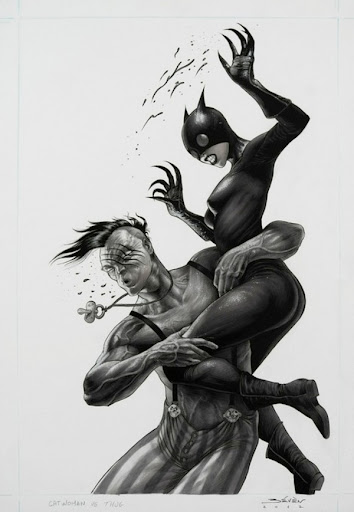
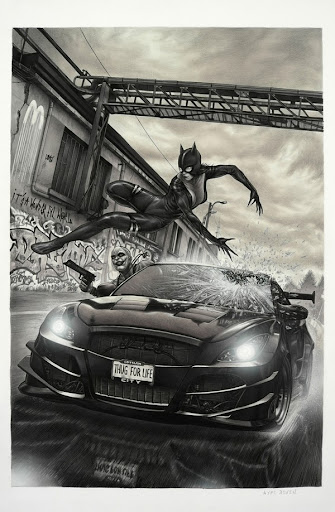
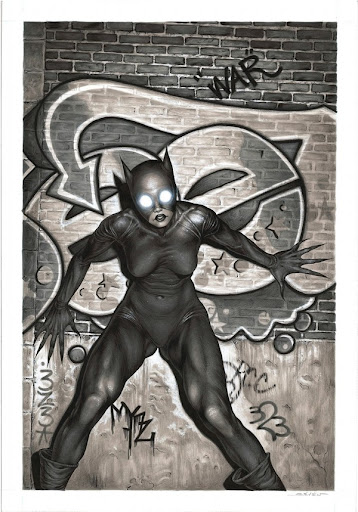

Aype Beven is a comic book artist. His sketches depict famous cartoon characters such as Catwoman, Batman, Wonder Woman, Harley Quinn or Hellboy. Discover.
More picture here.
Join us on Facebook or Twitter




Aype Beven is a comic book artist. His sketches depict famous cartoon characters such as Catwoman, Batman, Wonder Woman, Harley Quinn or Hellboy. Discover.
More picture here.
Join us on Facebook or Twitter
Philippe P tremant is a French photographer based in Lyon. In his series ” The Magnificent Seven “he diverts banknotes of different countries that folds and attaches using a paperclip in order to make portraits. It contains portraits of political figures such as Che or Queen Elizabeth.
More picture here.
Join us on Facebook or Twitter
As profit margins get squeezed and operating budgets get tighter, many small business owners struggle to put aside capital for their advertising initiatives. Knowing how to effectively advertise a business while staying within a limited budget is therefore a big plus, and it is all the more important at a time when consumer confidence and spending are weak.
Follow the Link to Read the Whole Article!
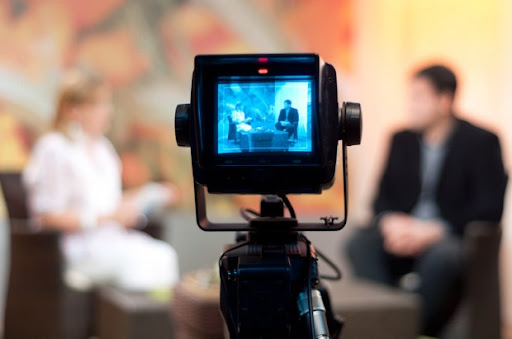
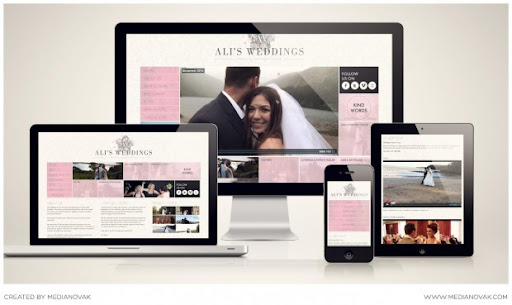

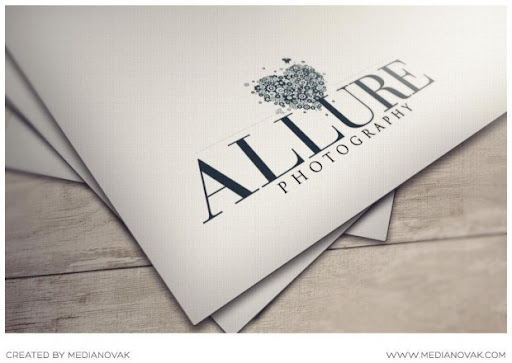
An ultimate collection of premium Reviews & Rating WordPress Themes for existing or upcoming blog or website.
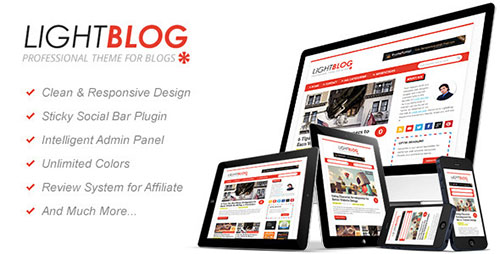



via DzineWatch
Infrared photography is certainly a different way to look at the natural world. When you get ready to take scenic digital photography, take a look at your camera. Not all DSLR cameras have the ability to take this kind of imagery, but quite a few of them do and this is becoming an option that is more and more popular for modern digital cameras. If your camera does have the option of infrared photography, then you will definitely want to consider using this for landscapes.
In order to get started with infrared photography, you must understand a little more about infrared light. Infrared light cannot be seen by the eye. This is because it is a light that has a longer wavelength than any visible color. However, infrared light is all around us at all times. It is a type of light that bounces off of every object. If you have a camera that is capable of infrared (or IR), then the camera will be able to actually see this light and use it to create very interesting images.

In essence, when you view an IR image, it will have an opposite look to it. For example, a cloudy sky will look very dark and moody. Dark green trees will show up as various shades of light gray and white. Overall, the look will be dramatic and often very eerie. This look can be a fun way to get a new take on the landscapes that may otherwise be boring. Infrared photography can be quite tricky to get. Truly, you have to start thinking differently from standard digital photography. You will need the right equipment as well as some basic guidelines for taking the right images.
To start with, for your infrared digital photography, you will need the right equipment. This is not the type of photography that can use just any old camera, just any old lens and just any old situation. Here is a rundown of the equipment that you will need for this type of digital photography.
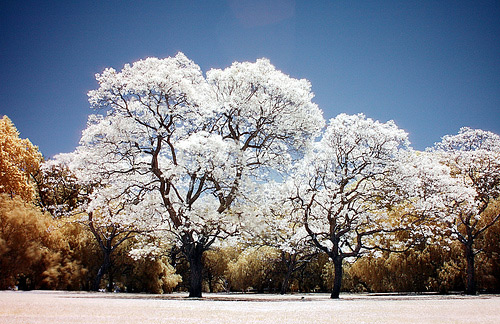
The Camera. Of course, you will need to have a camera. Not all DSLRs can take infrared photography, so make sure you have chosen a model that has the right built in equipment. If you are purchasing a camera specifically for infrared imagery, you will want to look for a camera that includes something called a "hot mirror." This mirror will help to isolate the infrared light, use it for IR images and then block it for standard images.
The Filter. You can take images with infrared without the filter, but it will not be as clear and crisp. Specialty lens filters are designed to block out other wavelengths of light so all that your camera is seeing will be the infrared wavelengths. This will allow the image to be more dramatic in color. Keep in mind that not all infrared filters are the same. That may mean that you need to consider paying a little more for a high quality filter. For the most part, you can expect to pay between $50 and $100. It would not be advisable to choose a filter that costs less than this.
As far as lens, you will want to choose the right option based on the landscape that you are photographing. As mentioned with any landscape photography, it is a good idea to choose a versatile lens that includes both moderate telephoto as well as wide angle. This will give the best opportunities to capture the whole landscape while highlighting the most important parts of the image.
Long exposures are required in order to capture enough of the infrared light. You will need to choose to leave the aperture a low f/stop for a wide aperture in order to capture enough of the infrared light. You know what that means. You will need to consider the use of a tripod and a wireless shutter release or you may end up with way too much camera shake.
You cannot just assume metering is the same because the scene has similar lighting. Because you cannot see IR light, you will have no idea of what metering you need to use until you take the picture. That means you will need to experiment to get the right light metering with each image that you take.
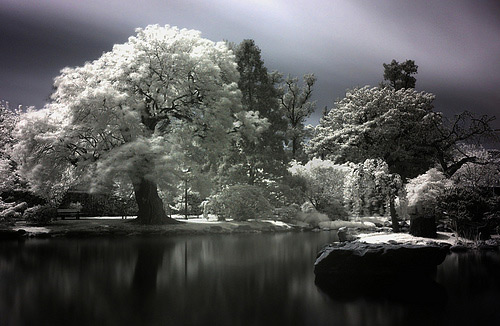
Focusing can be a problem. Because IR light is so different from standard light, you cannot focus in the same manner as you would with standard digital photography. In fact, auto focus may not work at all. For that reason, you will need to practice with focusing the camera yourself.
You will have to learn how to see IR images when you are framing up the shot. Digital views and LCDs may have a very hard time showing you the image, which means you will have to practice to get the right photo. If you truly want to make the best of IR digital photography, then you may want to consider a camera that includes an optical viewing system and not digital.
Be careful of the lens you choose. There are some lenses out there that have an IR blocking coating. This type of coating can actually cause problems with your digital photography when you want to capture IR. You may need to research lenses or experiment with the lenses that you have to avoid the problem.
Many people consider IR digital photography as a great option when they feel their landscapes have become dull or even boring. Because infrared photography can capture landscapes in a whole new perspective, then you will find that it can be fun, interesting and exciting. It is important, though, that you think of this type of photography in a different way. You will need to choose the right equipment and you will need to learn some different things about capturing the image if you want to have success at IR.
Top feature image Park Kuskovo. Large Palace pondvia Shutterstock
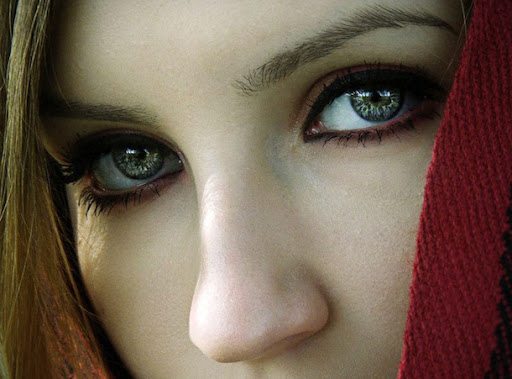
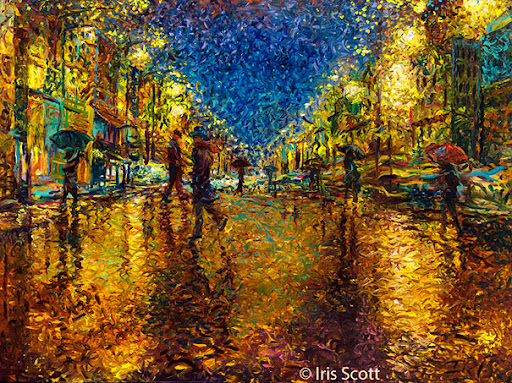

Beauty lighting is unique in itself because it only addresses lighting the model’s face. That’s not to say that you are not concerned with lighting her hair or other parts of her body. But when you are shooting a beauty ad or a headshot, it is imperative to understand how to specifically light for beauty. For the most part now in my career, I rely on a lighting accessory known as a beauty dish. A beauty dish is a round, flat dish usually 18″ to 36″ in diameter. It is metal and has a smaller opaque dish inside the metal dish that the light reflects against. The idea is the light reflects onto the smaller opaque dish, back into the metal dish and onto your model. The light is unforgiving but it is highly controllable in studio lighting situations. You can use a diffusion material over them, also known as a “sock”. Or you can also use a grid over the dish. A grid will soften the light but you’ll have more definitive shadows. The sock will soften the entire face, much like a soft box.
I usually place my beauty dish as close to the model as I can. Why? Because the closer the light is to your subject, the softer the light. My dish is placed high above the face, angled down on it at about a 45 degree angle. It also can be placed directly centered above the model’s face. This is normally referred to as “paramount” lighting. It got its name from Paramount Studios. This lighting was used constantly as a female “glamour” light. Remember the old Hollywood portraits made famous by photographers like George Hurrell? He used this lighting to accent the cheekbones and give a broad look to a narrow face. It is also sometimes referred to as “butterfly lighting” because of the small butterfly shadow under the nose. The shadow should fall half way between under the nose and the upper lip. With paramount lighting, I generally use a fill light to soften the shadows. I have to add here that paramount lighting has been deemed “unforgiving” light because it works best on women with high cheekbones and good skin. Beauty dishes somewhat reinforce that rule because when they are not diffused the light can equally be a bit harsh. Because I shoot young models, generally, with good skin, also generally, I don’t have too many dilemmas with this lighting. But I should say here that yes, it does have it downfalls on girls who don’t have the strongest bone structure or who have some skin issues.
BUT. Good models usually have Good skin! So it’s a lighting set up that I use frequently. (and I didn’t say it, but I’m saying it: photoshop can clean up the skin. We all know that by now, right?)
Beauty dishes are expensive. Here’s my favorite beauty dish on the market: profoto beauty dish. It’s probably the most expensive one on the market right now. But I love it. There are alternatives and much less expensive ones out there. Here’s one I took from the DIY photography site that you can make from a (gulp!) soup dish: soup dish beauty dish.
Here’s a diagram for a paramount lighting set up:

This diagram also shows a hair light and fill light set up that you can use with your paramount lighting. On the shot below, I wanted a strong character lighting so I used paramount lighting with a beauty dish. You can see how you can get those “raccoon eyes” if you’re not careful. I didn’t use a fill on this shot because I wanted an edgy look. In the cover shot I took at the top of this blog, I used paramount lighting with a beauty dish and a soft fill to the left of the model so I could get rid of the strong shadows under the eyes and nose and soften the skin a bit more. Also, as you can see by the shadows to the right of her nose, my beauty dish was not directly over her but placed slightly to the left of her face.


When I am assigned a shoot, the first thing I get to work on is hiring my crew. When I talk about crew here I am talking about the hair stylist, make up artist and wardrobe stylist. These three people are going to play a huge importance to the shoot. Without their talent and their work, I really can’t produce a great fashion shoot. And I need all three to be talented and hard working. In other words, if I have put in the time and energy to find the perfect model, get the proper location all set up with permits or permission or whatever it takes, then I find a great wardrobe stylist who pulls amazing couture labels like Galliano and Dior and a make up artist who has skills to die for but the hair stylist shows up and can’t do an up do, I’m pretty much looking at a half finished production.
Here’s what I do to ensure that my shoot is going to look amazing! First of all, for the most part, I use a hair, make up and stylist agency. I work with the booker to find the right talent for the right job. Again, it’s like finding the right model. I’m not going to look for a make up artist who’s book is primarily lifestyle or clean beach stuff when I’m shooting an editorial in a studio and the editor wants a couture shoot. I’m going to look for a make up artist that has beautifully well executed high fashion make up in her book. Same with the hair stylist. And same with the wardrobe stylist. It’s great that they might have just done a year of wardrobe styling for Levi’s, but if they don’t know how to handle a $10,000 Chanel gown, I can’t use them for my editorial shoot.
So here’s how it went down with my last shoot for an 8 page editorial. The theme of the magazine issue I’ve been assigned to shoot for is the “Art Issue”. The editor wants big labels and he wants me to shoot dresses for this editorial. So I called a booker at one of the agencies that I like working with. I’ll be honest here: I work with agencies where I like the booker. It’s nice to have someone who gets my style and who gets me. And someone who’s honest and communicates well. When I write an email about job details, I insist they respond quickly. The last thing I need when I’m in pre-production is not knowing if I have my crew hired or why the booker isn’t getting back to me. So for this shoot I called Mia Fina at Artists by Timothy Priano in Los Angeles. Artists by Timothy Priano has offices in New York, Miami, Chicago and Los Angeles. They are a very reputable hair, make up and stylist agency. I told Mia what I’m shooting and what I’m looking for and gave her a rough date of the shoot. She then sent me an email with 2 or 3 choices for hair, make up and wardrobe stylist. I then ran the list by my editor and he gave me his input on whether he had worked with any of them before and if he preferred one over the other. The editor and I both looked at their pages on the agency website while were on the phone with each other, and narrowed it down to who we preferred. I then got back to Mia and told her who I was mainly interested in working with. With the hair stylist, she had to verify if she could do up do’s. That’s another thing: you have to be able to conquer the lingo in the fashion world. You have to know the difference between a french braid and a french twist (ie. pictured below). You really have to know how to communicate with your team in order to get the results you want.

After about a week of going back and forth of who was available or who might be put on hold for another gig, we nailed the crew down and I got a great team for my shoot. I worked with make up artist Lucine, I also worked with Stephanie Pohl who did hair and Robyn Goldberg who was the wardrobe stylist. All three of these girls were amazing at what they do! And they all got along well, which is another thing that is so important. Fashion shoots are tense enough. A million little things can go wrong on them so it’s important that your team has a good attitude and willing to overlook the little hiccups and just focus on giving the shoot their very best! It’s a huge drag when you have a diva hair stylist on your shoot throwing a hissy fit because the model’s hair doesn’t hold the curl he’s trying to get. Or the wardrobe stylist throws a tantrum because the shoes are one size too small on the models’ foot. It’s all about team effort and team spirit to get that great looking shoot accomplished!
I realize that to get your foot in the door with an agency is not as easy as it sounds. So for those of you who are starting out, you can check the local beauty schools. There are academies like Paul Mitchell and Sassoon who have students learning how to cut, color and style hair. You can find out if there are any students who would like to test for their portfolios. There are sure to be some students who would like to get into print and not just stay in the salon. There are make up schools like this as well. With stylists, it’s a bit trickier. Try some production houses in your area and see if they can give you a list of some of their wardrobe people that they’ve used in the past. You can always do a TFP, which is test for portfolio or test for pictures. Word of mouth is a good way to meet some of these people too. Even myspace (gulp..did I say that??) has some talented kids on there that are starting out and willing to TFP.
If you’re based in LA, here’s a small list of some agencies you can call and show your book to the bookers. It’s good to introduce yourself and tell them you’re interested in building your book. If you hit it off and they like your work, they will help you out with their talent when their talent is looking to test and expand their books!
Celestine Agency
Artists by Timothy Priano
Cloutier Agency
Photogenics
The Wall Group
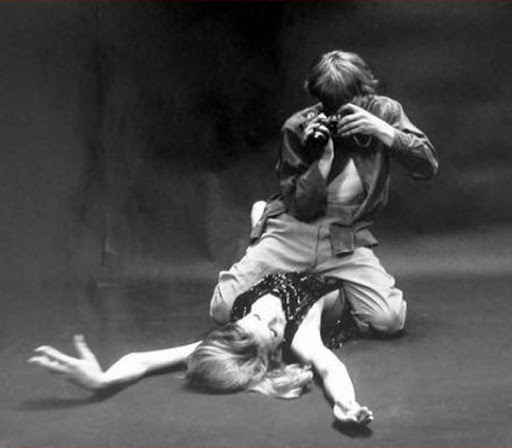
Lisa Wexton Says:
Hello, I realize this question is going to seem like it's coming completely out of left field, but I really do mean it as a serious question, so I hope you answer. I'm familiar with your work and seen you in action, and you really have a way with models. You really know how to bring out the best in them and use it to create these incredibly iconic images that just seethe with raw sexual energy. Is that something you are aware of? Do you consciously create that or does it just happen spontaneously? And, as long as I'm being plain-spoken, let's face it: You're incredibly hot, LOL. Does that ever interfere with professionalism on a shoot, and/or your artistic relationship with the model?
We've all seen the movie Blowup by Michelangelo Antonioni. (And if you haven't, go out and get it right away. It's on the must-see list for every aspiring fashion photographer.) For those of you who have seen it, we all know the famous scene: It's a photo session, and hot London fashion photographer David Hemmings is shooting his muse, the gorgeous Veruschka. The shutter whirs as Hemmings feverishly takes shot after shot of Veruschka writhing on the floor. It's an intensely sexy scene, and the erotic implications are obvious. It's almost like watching a porn, except the actors are completely clothed and there's no actual sex at all. But it's very hot, like sizzling-hot. Of course, it makes us as fashion photographers look like we get laid every other day by young, eager, sex-kitten models. And maybe some of us do. However, that's never been my story.
To get to Lisa's question, though: The short answer is, yes, I have certainly had incredible chemistry with many models. I try to find a connection with every model I work with, and one of my strengths as a photographer is that I am (almost always) able to find and tap into that connection, thus forming a chemistry between us. But no, it has never interfered with my professionalism on a shoot or with my integrity as an artist.
Yes, there certainly is some pretty raw sexual energy buzzing around on my shoots. I should fucking hope so-that's one of the qualities that make my photographs interesting. It's what I hope for in every shoot, because when that kind of energy is unleashed before my camera in a sexually charged artistic context, the results are epic. I've spent years learning how to connect with and direct models. When I'm casting I look for models who have raw sexual energy, and I also look for people I have a genuine and natural spark with. Because it's really tough to pull out a sexual quality in a model who doesn't have at least a little of it to begin with, and it's even more difficult to get a good creative groove going if there isn't a mutual, electric, and very real connection between photographer and model. A good photographer knows how to use sexual tension to enhance the image.
It's a fine line to walk, though, that's for sure. As Lisa hinted at in her question, the temptation to cross the line between personal and professional is ever-present and annoyingly strong. Lord knows I've felt it from time to time. Part of what makes a creative dynamic successful is a genuine attraction, a mutual fascination that can't be forced or faked. But at the end of the day, you have to choose whether to master your desires or be mastered by them-meaning, are you serious about your art? Are you serious about your work? How dedicated are you to your career? In my case, the answers are yes, yes, and very.
The truth is, it's not necessary for me to sleep with models in order to get good photos, and to be honest, I'm not interested in taking that route anyway. Not to sound cold-because hell, I enjoy sex as much as anyone else-but when I find a model I have really good chemistry with, the last thing I want to do is waste it on a petty sexual fling. I guess it doesn't hurt that I'm married to a gorgeous 22-year-old who happens to be my soul mate, ha ha. But seriously, I would much rather use the erotic chemistry I have with a model to create a compelling, memorable image. It's all about the art for me.
Sexuality is part of my visual aesthetic. I like sexy things. I like beautiful things. Hey, I ought to-I'm a visual artist. Sexy, vibrant, provocative people, places, things, and experiences are what capture my eye and inform my work. I have an eye for sexy and gorgeous, I'm able to read people really well, and I know how to bring out their sexiest qualities. It isn't a talent I acquired overnight, though. It took years of experience being behind a camera to hone that particular skill.
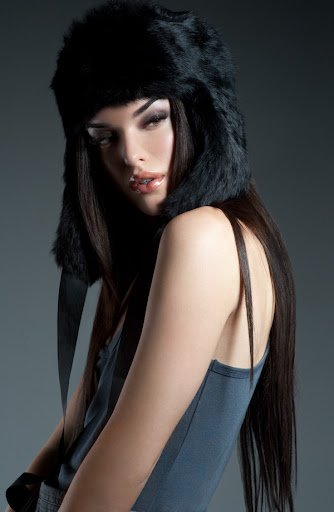
Kevin Pohl Says:
Ok so, I seem to have a trump card opportunity with this weeks blog request. And I'm sure you are tired of me nagging you with this question, but you did say that you were gonna blog about this, and you still haven't written me your thoughts on this so here it goes. I would like you to blog about: “How does a photographer go about defining his/her creative vision? Is it something that you just have or do you need to develop it? And, if a photographer struggles with finding his/her own voice as an artist with a vision, can that photographer take certain steps to develop and define that creative vision? " Hope you'll blog about this soon, as it's an important question on everyone's lips. Everybody says, create your vision!, build your portfolio!, and market like crazy! But nobody tells us HOW to create that VISION part of the equation. Love your work, and this Blog! It's Awesome!
Poor Kevin! He’s right…….he’s written to me personally a few times with his question. And I kept writing back to him promising I will blog about it soon. I don’t know why I keep putting it off…it sort of hits a nerve, I guess. He asks, “How does a photographer go about defining his/her creative vision?” Is he asking, how do you define your vision or your Photography STYLE? Your style is the look and feel of your work as a definitive and continuing stream. Is your work moody and surreal? Is it bright happy? Is it colorful and smiley? Or is it dark and thoughtful? These are words that would be used to describe the look or STYLE of your work. And yes, as a photographer that wants to compete in the market, a style is something that art directors and editors look for when they look at your work.
First of all, before you start defining your style, you need to figure out what facet of fashion photography you like shooting the most. Do you like “Lifestyle”? Happy, shiny teenage girls playing frisbee on the beach with maybe a dog; golden retriever or dalamation is perfect for this! No pitbulls, please. Throw in a couple of jock looking teenage boys and a picnic blanket (bright pink, ok?). I personally disdain this kind of work. Therefore, you don’t see it in my book, or anywhere near my name. I’ve nothing against it but if I was forced to shoot this kind of work in order to call myself a fashion photographer, well, I’d rather go into something else, like criminal profiling (yep, secret fantasy job). But Lifestyle work pays and pays WELL. I absolutely hate showing you an example of a fashion lifestyle shot, but here you go: ( I didn’t shoot this! )
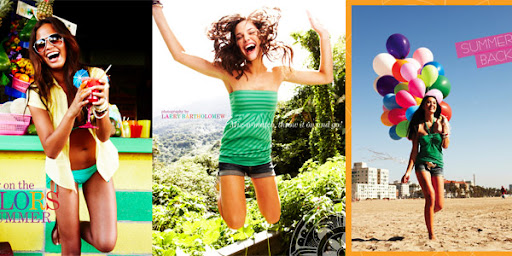
Another facet is Beauty. Big, huge cosmetic campaigns. Read: $$! Do you like faces, tight shots, beautiful lips. Fabulous make up work? Beauty is another facet of our industry that you can focus on and become known for that work. Or, does Haute Couture make you faint? It makes me faint and that’s where I wanted to place myself in the spectrum of fashion photography. I’m a glutton for talented fashion designers and I go weak over exquisite fashion design. Pleats really do it for me. Tulle? Gets me going! But it’s not for everyone.
Once you’ve figured out what type of fashion photography you like doing, you then set out to shoot work in that vein. Big dramatic, sweeping gowns in a studio with beautiful light! That would be the kind of shoots you would focus on to build a portfolio geared toward high fashion. If you want to be a lifestyle shooter, then gather the teens up and head to the wheat fields, the lakes, the beach, whatever fab nature is near you and shoot in that late afternoon sun! Make sure everyone is smiling and happy!
I suppose it’s a regional thing too. I’ve always been based out of big city where defining your style is a must. However, if you live in areas where there’s not a TON of fashion work, then you’ll probably want to cross into other areas so you can get work in all facets. I personally feel that this confuses potential clients. You think you’re showing them work that conveys that ” you can shoot it ALL”. But art directors don’t look for that. They look for the books that come in that are defining the ad campaign they are working on. If an art director is working on a big perfume campaign, he’s not going to call in books from photographers who shoot lifestyle or catalogue. And vice versa, of course. My book doesn’t get called in to lifestyle. Unless it’s a friend and she knows I can very well shoot it and I’ll do it for the money but I am not going to start putting that kind of work in my book because I don’t want to be “known” as a lifestyle shooter.
Now, if Kevin is asking me how do I define my vision, then that’s a completely different answer. My vision is what makes me move throughout the day as an artist. And it’s hard to describe in words. I was talking to my assistant, Carmen, about it because I was a little confused by the question. Carmen helped me break down the thought process behind a concept for a shoot by asking me what inspires me initially and then where do I go from there, step by step. So let me give you an example of just how that goes down:
I recently went to an open call that an agency here in LA set up for me to come in and see their new faces. I met a model there named Lulu. A tall Chinese girl with a beautiful face!

I knew immediately I wanted to shoot Lulu but didn’t have the concept for it. I told her agent just that! “I want to shoot Lulu, let me figure out how and what and where and I’ll get back to you.” I then walked out and I let it go. A couple of days later, with Lulu’s card sitting on my work bench to remind me that I want to shoot this particular model, I start thinking of what I want to do with Lulu. Studio? Location? Lighting? Clothes? I show her card to a few stylists to see their reaction, maybe it will get the juices going and we can start throwing ideas back and forth. But nope, nothing earth shattering came out of the stylists mouths even though every one agreed she’s got something unique and they’re happy to style it so let them know when I have the concept! A few more days went by and I am not sure how I got to this point but I remembered a shoot I did with another Asian girl where I shot her in a studio against a green screen and then went down to Chinatown on my own and shot long shutter exposed background shots.
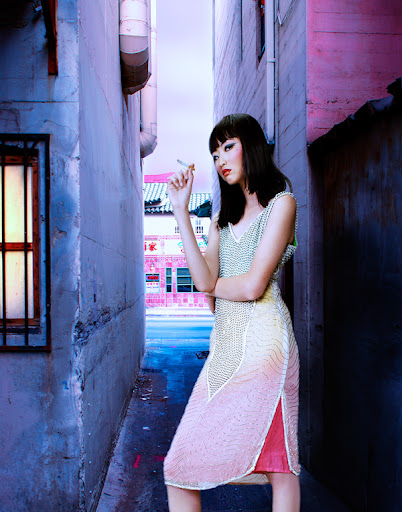
I learned a lot from that shoot. I learned it looked too “shopped” and I should’ve just taken the girl down to the actual location and shot her there. It looked to “posed”. Plus the girl then was way too young, like 14 and she looked uncomfortable in the shots. She was too shy for the sexy, dark, steamy atmosphere that I was trying to convey. I always wanted to re-shoot the idea because I have this fascination with Asia ever since I read Maguerite Duras’ “The Lover” when I was 19. Her descriptions of the room where the lovers met and the scenery of Vietnam in that particular era are just a exquisite.
Voila’!! There’s the concept. Take Lulu down to Chinatown and take the original concept I had from years ago and shoot it the way it SHOULD be shot. I will learn from my past mistakes and do it right this time. At least that’s the goal! What do I do next? I will head down to Chinatown with David one night with my little point and shoot which will probably not have the battery charged, so then I’ll attempt to shoot it with my Blackberry which takes pretty mediocre snapshots, eat an overpriced Chinese meal and walk around looking for backgrounds to shoot the model.
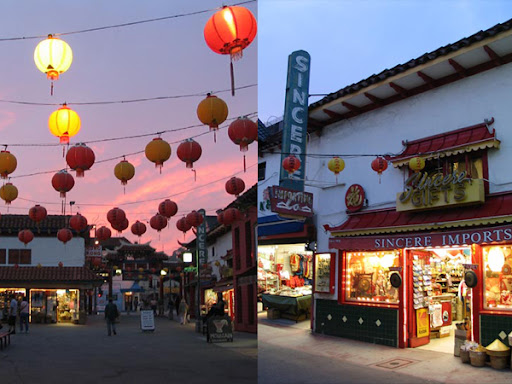
I want to shoot at least 6 shots. Why 6? Well, even though it’s just a “test”, there’s a possibility of submitting it to a magazine somewhere at some point. But more importantly, I shoot tests with the goal of it landing in my book and I’m “DEFINING” (there’s that word again) my fashion photography towards fashion editorial. So the shoot should have a theme with continuity. Okay, so let’s say I’ve found a few backgrounds that will work, what do I do next? I come home and start knocking out a shot list. I actually pull up Word on the computer or if I’m not at home, I’ll use a paper napkin, any damn thing, and start numbering the “pages”. Shot 1. Shot 2. Shot 3. Sometimes it pours out of me and I fill in all 6 pages in one sitting. Sometimes I stop at 4. I don’t push myself. Maybe we’ll let it grow organically on the shoot and let spontaneity be our driver. I mean, it’s test! No client is breathing down my neck. And it’s for my book so I can get as creative as I want. Okay, what’s the next step?? What have I blogged about over and over again?? Who’s the most important person a fashion photographer aligns themselves with? Your STYLIST! I will call a couple of stylists and run the concept by them. We will talk about logistics: No budget since it’s a test so no honey wagon because I’m not forking out hundreds of dollars for a trailer. Which means the model will have to change in the car or public restrooms, which means we have to be careful with the clothes. We talk about location permits, which again I won’t fork out the moola for so we’ll have to shoot it guerilla style. Hair and make up needs to be started out at someone’s house before the shoot. We’ll figure that out closer to the shoot date.
Right now, I haven’t shot it yet. I haven’t even gone down to Chinatown yet with David. But that’s sort of how a shoot begins at birth and takes on the evolutionary process on “defining a vision”.
Now Kevin, I hope I’ve answered it all here for you! I hope it was worth the wait!! ; ) Okay, I’m going to go jump in my friends pool and not think about work for the rest of the day! A much needed break away from phones and computers! My brain won’t stop thinking, though. A Creative Vision is something that never leaves you. It’s part of your soul! And to quote one of my favorite rappers, Nas, from One Mic: ” if you need some soul searchin’, the time is now”.
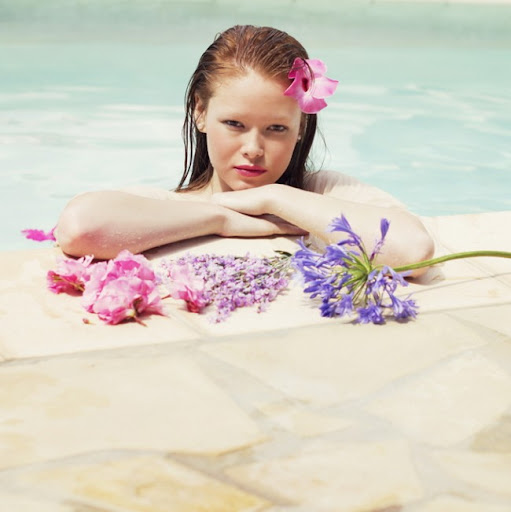
Julia Morozova is a dance/movement psychotherapist and also talented photographer, who live in the Netherlands. via PhotoHab – Social Photography Blogs.
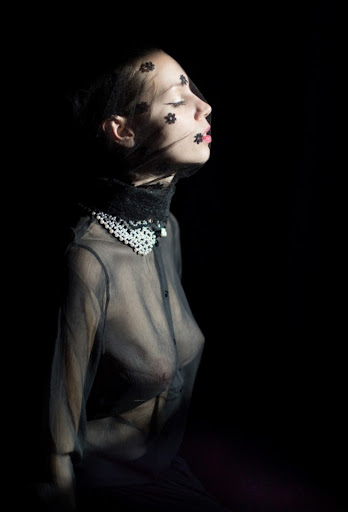


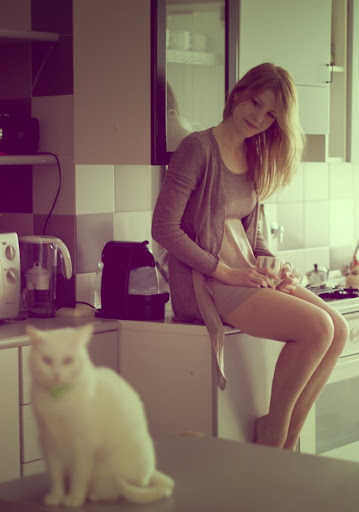
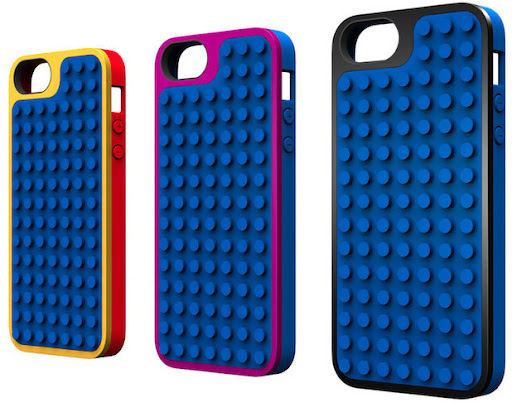
Lego iPhone Cases by Belkin
Via Jay Mug

The incredibly stunning Lara Stone shows her face on the march-cover of VOGUE Australia. Angelo Pennetta captures her without showing much garments or make-up, pure beauty. See even more of her here.
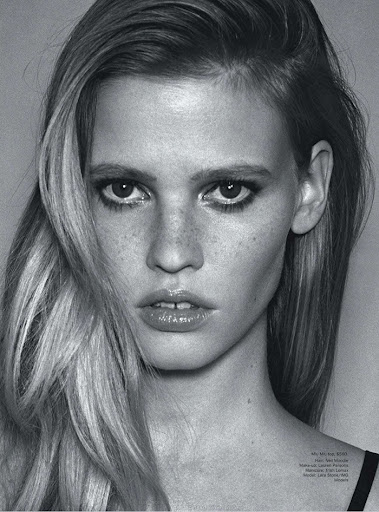
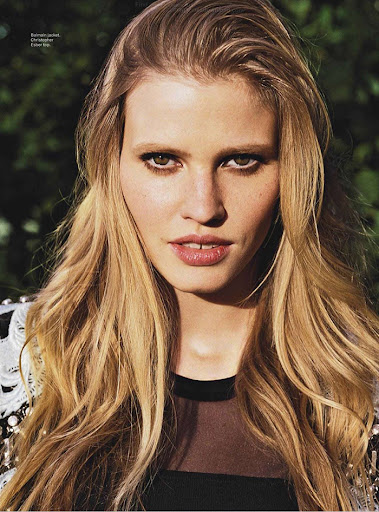

Gabriela Herman is a portrait, fine art and lifestyle photographer. She divides her time between Brooklyn, Martha's Vineyard and Brazil. via PhotoHab – Social Photography Blogs.
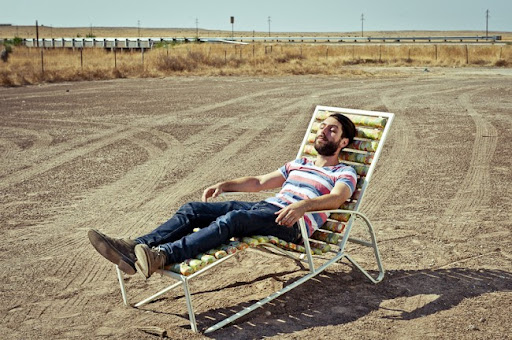
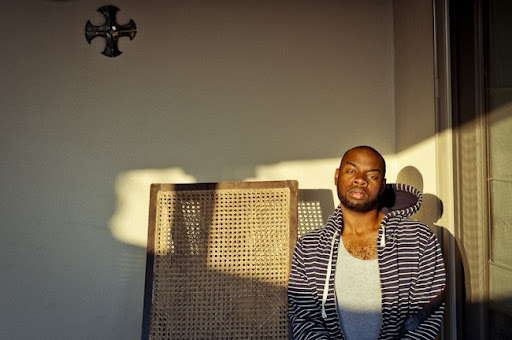
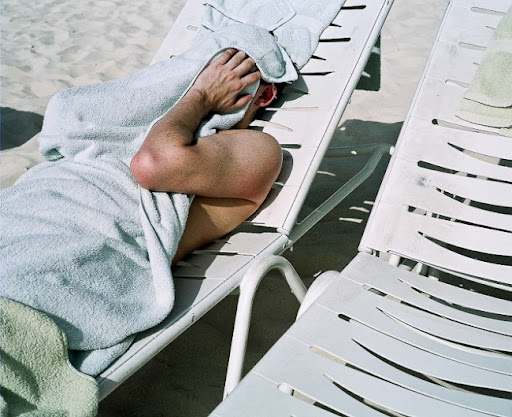
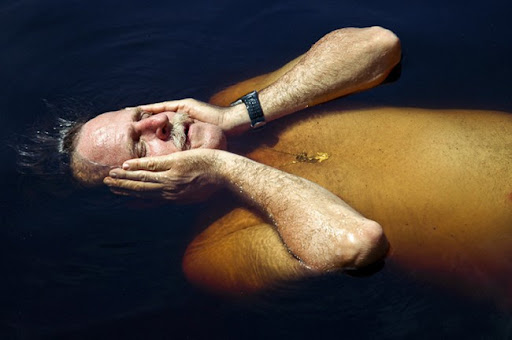
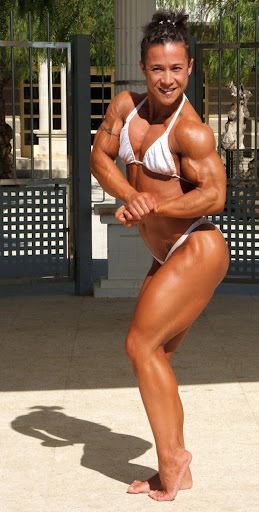
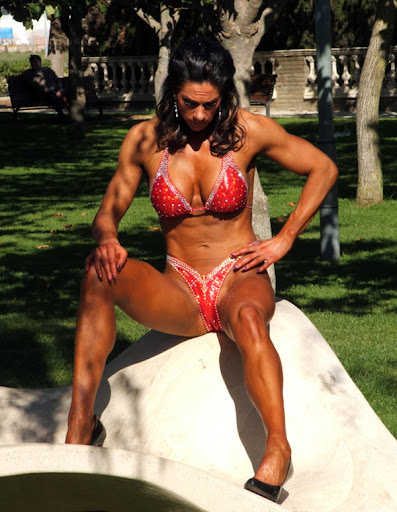

For More Photos..
These photos have been taken from Santa Susanna championship in October 2008 by Hardbodies who is a male photographer from France. Some pictures were taken indoor and some outdoor. Women were very kind to take their photos but it may not be as perfect as some professionals do.
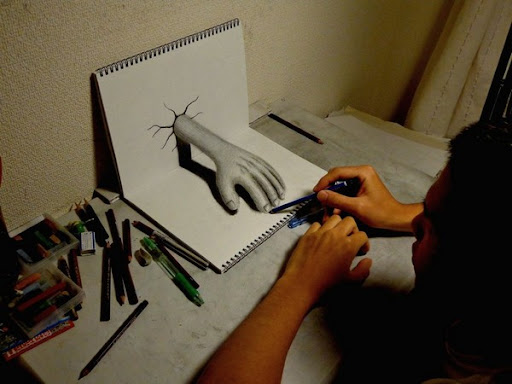

The young Japanese artist Nagai Hideyuki is back with new anamorphic drawings. Ever more impressive, we expressed once again his talent through his illustrations in three dimensions.
More picture here.
Join us on Facebook or Twitter
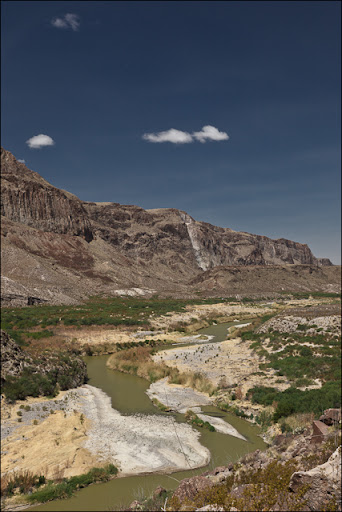
Upper Madera Canyon – Big Bend Ranch State Park, Texas
Copyright 2011 Jeff Lynch Photography
Shot taken with a Canon EOS 5D Mark II set on aperture (Av) priority using an EF 24-105mm f/4L IS USM lens tripod mounted. The exposure was taken at 47mm, f/14 for 1/60th of a second at ISO 100 using a Singh-Ray warming polarizer filter. Post capture processing was done in Adobe’s Lightroom 3.
Click on the image above for a larger version.
Sometimes just wandering around a few thousand acres of desert in the heat of the mid-day sun is all you need to appreciate the cooler (but more humid) climate of East Texas. However, with the current drought conditions lingering this winter, the “green-belts” around my neighborhood are beginning to resemble Big Bend more and more each week!
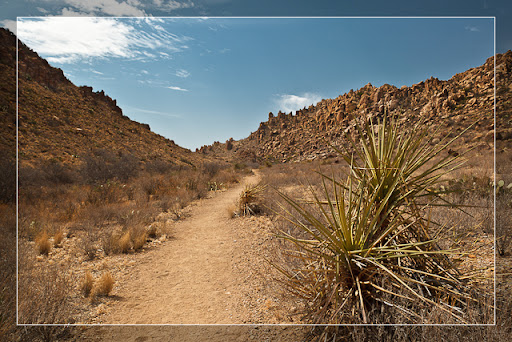
Trail Bound for Nowhere – Big Bend National Park, Texas
Copyright 2011 Jeff Lynch Photography
Shot taken with a Canon EOS 5D Mark II set on aperture (Av) priority using an EF 24-105mm f/4L IS USM lens tripod mounted. The exposure was taken at 47mm, f/14 for 1/60th of a second at ISO 100 using a Singh-Ray warming polarizer filter. Post capture processing was done in Adobe’s Lightroom 3.
Click on the image above for a larger version.